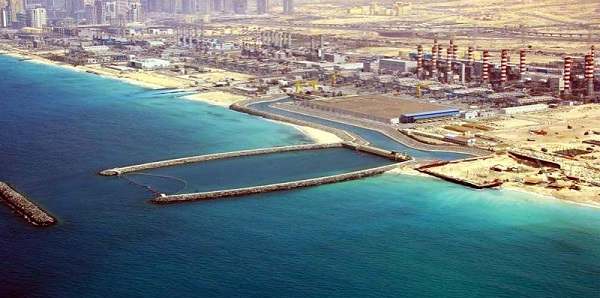An Aston University academic has proposed a new process to decompose waste desalination brine using solar energy, neutralising ocean acidity and reducing damaging environmental impacts.
Although turning salty ocean water into fresh water is important to benefit poverty-stricken populations, desalination has a very damaging ecological footprint. Many environmental advocates see it as a last resort for retrieving fresh water, but fast growing populations mean it is becoming the only viable option.
The amount of fresh water produced by desalination is predicted to double within the next decade to meet global demand.
Dr Philip Davies, of Aston’s School of Engineering and Applied Science, has devised a system using solar energy that could allow desalination plants to act as a sink, rather than a source of atmospheric carbon dioxide, and help to neutralise ocean acidity.
In Dr Davies’s model, magnesium chloride in waste brine is hydrolysed by energy generated by heliostat fields to magnesium oxide, which is discharged to the ocean. Due to its alkaline nature, this subsequently neutralises ocean acidity and gradually removes carbon dioxide through the conversion of magnesium oxide to bicarbonate, similar to ocean liming.
Although this approach increases the energy requirement of the plant by 50%, Dr Davies has calculated that this is offset by the carbon dioxide absorption capacity. His process would result in 0.4% of anthropogenic carbon dioxide emissions being absorbed given a doubling in the current desalination capacity.
Dr Philip Davies, Reader in Mechanical Engineering and Design, said: “Lowering the energy required to dewater brine prior to decomposition would be a major environmental benefit. Not much energy is needed to decompose magnesium chloride in brine to magnesium oxide, which makes the use of solar energy potentially very attractive. If we could find better ways to dewater the brine this would become very energy efficient as a means of avoiding carbon dioxide.”
On the other hand, Dr Davies notes that the rapid growth in desalination technology is also spurring developments that could make the dewatering process easier. “There are a lot of new ideas in desalination coming along, such as improved membranes for membrane distillation and electrodialysis”.
He continues: “Since desalination is essentially about separating salt from water, perhaps these developments could eventually be used to remove water from the corrosive brine coming out of the desalination plant at relatively low energy cost”.
References:
Publication: P. A. Davies. Solar thermal decomposition of desalination reject brine for carbon dioxide removal and neutralisation of ocean acidity. Environ. Sci.: Water Res. Technol., 2015
Story Source: Using solar energy to improve desalination process, Aston University —
February 5, 2015















Comments